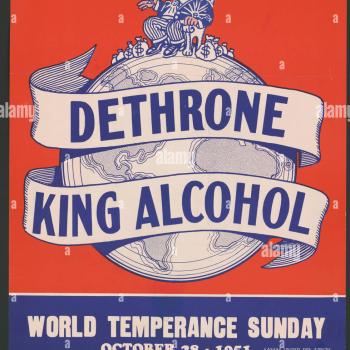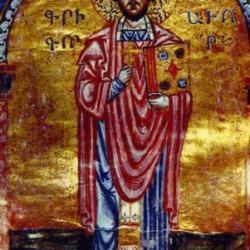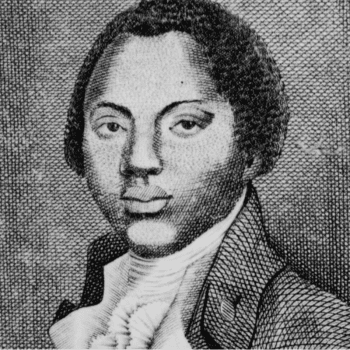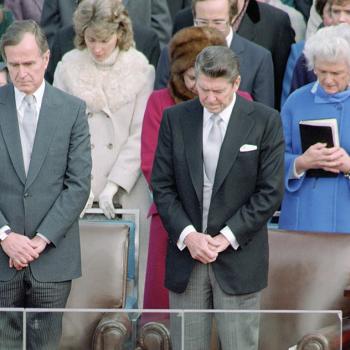If you have French friends, thank them for their nation’s help during our revolution and I hope you invited them over for barbeque on July 4th. And if they invite you to celebrate Bastille Day on July 14, gladly accept. But you should not necessarily think you are celebrating the same revolutionary spirit. This is acutely true when one considers the two revolutions and religion.
The throngs of diverse religious (largely Protestant) communities that had settled this country prior to the America Revolution rendered impossible setting up an established national church along the European “state church model.” This reality–combined with the principled arguments leading toward religious liberty put forth by figures such as William Penn, Roger Williams, and, later, Thomas Jefferson and James Madison–led, in meandering and often inadvertent fashion, to the principles of “no establishment” and “free exercise” of religion embodied in the First Amendment. An outside observer, the Turkish scholar Ahmet T. Kuru, has recently called the US model passive secularism, which has historically—and sometimes only gradually–allowed for the peaceful coexistence of a wide range of religious actors and communities and has encouraged them to participate in the democratic process.
The voluntary nature and philanthropic energies of these religious communities frequently stood out to European visitors to these shores. In his landmark study, The American Commonwealth (1888), the British scholar James Bryce identified America’s “religious voluntarism” as the most salient point of contrast with the “Old World.”
The German sociologist Max Weber was fascinated by America’s mix of freedom and “very intense church-mindedness” and believed that the social energy unleashed by a voluntary approach to religion contributed massively to what today we would call “civil society”; it also contributed to the trustworthiness of business transactions and the myriad personal motivations and initiatives underpinning a free society and free enterprise.
Earlier, the Frenchman Alexis de Tocqueville was struck by the compatibility of religion and democracy in the new Republic. “Upon my arrival in the United States,” he famously wrote, “it was the religious aspect of the country that first struck my eye. As I prolonged my stay, I perceived the great political consequences that flowed from this new state of things. InFranceI had seen the spirit of religion and the spirit of freedom almost always move in contrary directions. But inAmericaI found them united intimately with one another: they reigned together on the same soil.”
The situation in France was different, indeed. On the eve of 1789, a single national church monopolized the religious sphere of the Ancien Regime, thanks to the Sun King Louis XIV’s decision to boot out Protestants when he revoked the Edict of Nantes (1685) and keep Jews as second-class citizens. This religious monopoly had generated much anticlerical vitriol during the eighteenth century, captured well in the philosophe’s Denis Diderot’s morbid quip that freedom would not come to Europe until the last king was strangled by the entrails of the last priest.
Pent-up anticlericalism burst onto the scene politically in the form déchristianisation in the more radical phases of the Revolution in the 1790s. Indeed, this period (little studied in American schools) represents one of the most radical moments of cultural discontinuity in Western history. France witnessed the abolition of numerous monastic orders and the state’s confiscation of ecclesiastical properties; the forcing of clergy to sign an oath of loyalty to the state in the Civil Constitution of the Clergy; the killing of thousands of non-oath-taking priests in the Vendée uprising of 1793; the pillaging of churches and monasteries throughout France and Europe to finance the revolutionary armies fighting abroad; the abrogation of the Gregorian calendar and attempt to introduce a new one based on revolutionary-era sensibilities; the re-naming of streets and locales from saints’ names to figures and ideals of the Revolution; the brief transformation of the venerable Notre Dame cathedral into a “Temple of Reason,” dedicated “to philosophy”; and, not least, the abduction and exile of no less than two popes—Pius VI (1798) and PiusVII (1809). Not surprisingly, many ofEurope’s devout onlookers equated the Revolution, and later its international embodiment in Napoleon Bonaparte, as a sure sign of the Apocalypse.
Reflecting on these events in his The Old Regime and the French Revolution, Tocqueville summed up matters well: “In France . . . Christianity was attacked with almost frenzied violence.. . . . There is no question that the nation-wide discrediting of all forms of religious belief which prevailed at the end of the eighteenth century had a preponderate influence on the course of the French Revolution. This was, in fact, its most salient characteristic, and nothing did more to shock contemporary observers.”
In contrast to the passive secularism of the United States, the French Revolution left a legacy of assertive secularism, to quote Kuru again. While not without European critics (see Edmund Burke), this legacy has informed many republican and socialist ideologies (see Karl Marx) and movements on the Continent during the nineteenth century, and received transmogrified political expression after the Bolshevik Revolution of 1917. In a more benign form, it lives on in France today in the form of strong anti-Catholicism among secular elites and in laws banning headscarves and other religious images from public places.
In our discourse about religion and public life, one often hears general references to “Western secularism,” frequently in reference to its possible applicability to Muslim countries as they struggle today to find a path toward democracy and freedom. This assumes, of course, that “Western secularism” is a unitary phenomenon. It is not. It comes in multiple versions, often tied to the particular historical experience of continents, countries, and regions. At the very least, we need to distinguish between American and French revolutionary trajectories of secularism and their respective implications for present-day geopolitical realities. Doing so would enrich analyses of contemporary affairs, for you can’t think well about the present until you see clear-eyed into the past.
Happy 4th of July. Happy le 14 juillet.
The material from this blog appeared in a different form in the Salem News last year.
















